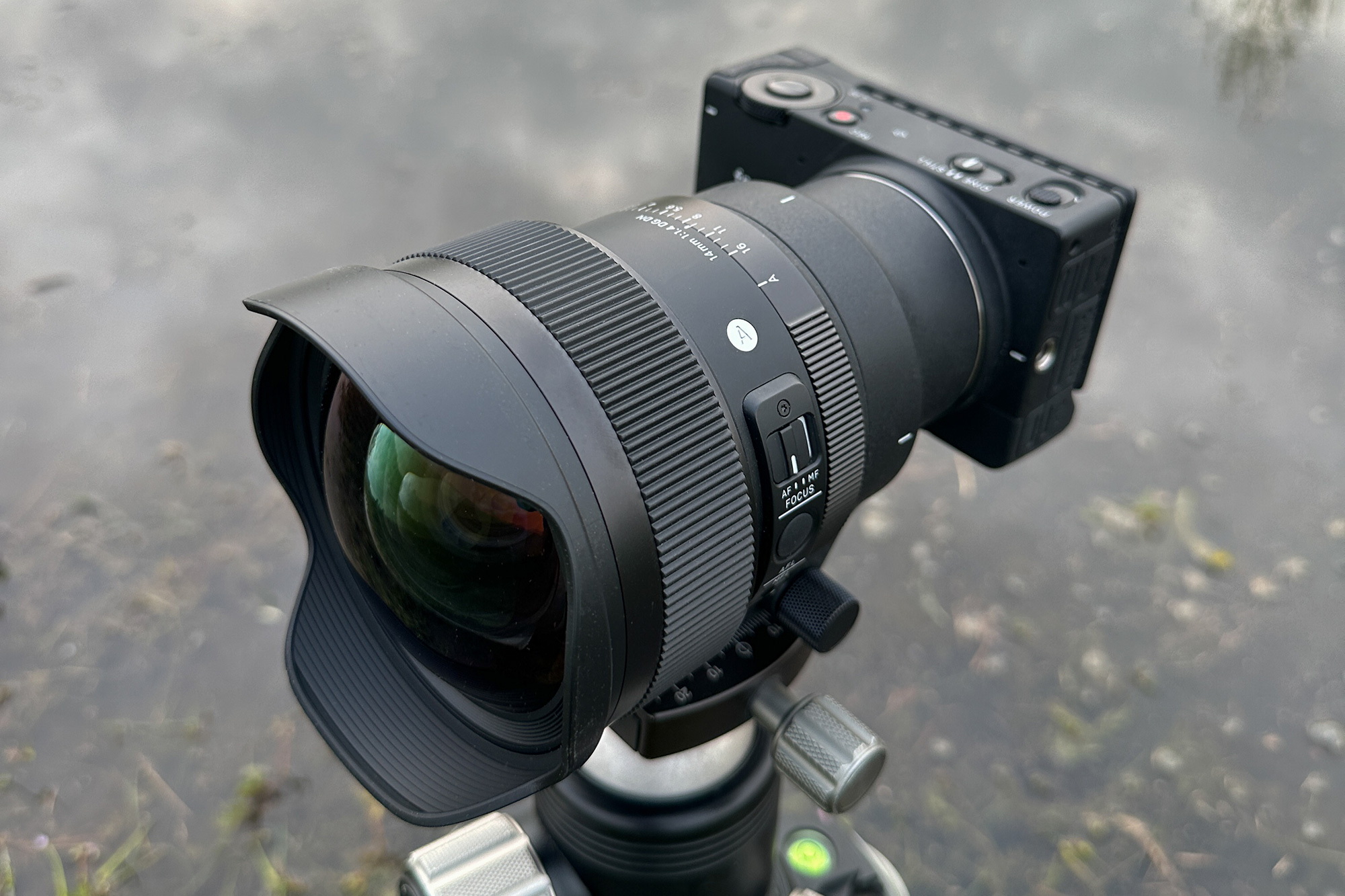
SIGMA has just released the world’s first 14mm F1.4 wide-angle prime lens, the SIGMA 14mm F1.4 DG DN | Art. As a landscape/nightscape photographer, this lens was a dream to use. While, at this time (June 2023), there are no other 14mm F1.4 lenses on the market, SIGMA set the bar high in terms of image quality, build and design. In this first look article, I’ll take you through real world situations and how this lens performed.
First Impressions of the 14mm F1.4 DG DN | Art
Right out of the box and onto the SIGMA fp L camera, I noticed how nicely it sat in my hands. The removable tripod collar is a nice touch and came in handy each time I took the lens out for a shoot. With the ability to loosen the tripod collar and rotate the camera, there is no need for an L-bracket. This makes changing compositions a breeze. With the tapered design of the lens, holding the lens in your hand while shooting feels very natural. Allowing your thumb and middle finger to easily adjust the manual aperture ring as needed. After getting a good feel for the lens, I charged the batteries in the camera and out to shoot I went.
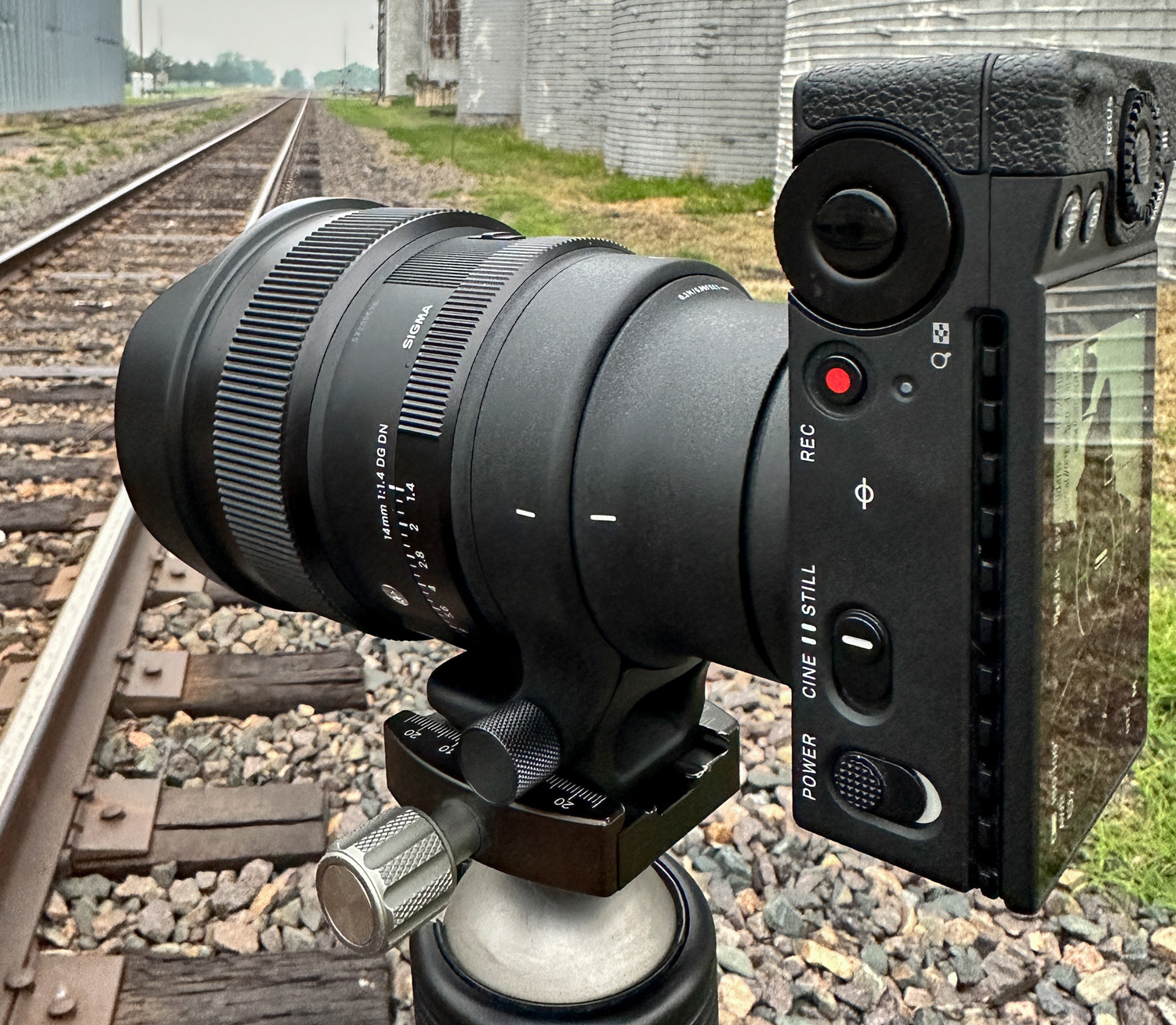
Anytime I am testing out a lens, I always want to see what it can do at the extremes. The SIGMA 14mm F1.4 DG DN | Art, being a prime lens, helped to minimize the issues most lenses face when pushed to the limit. The extreme in this case was the super wide F1.4 f-stop. This is something we have never seen before on a 14mm lens. I knew this would come in great for low-light situations and night photography, but I wanted to test it in more normal settings as well. Using the lens at F1.4 definitely allowed me to use super-fast shutter speeds. Even though my images were shot on a tripod, these fast shutter speeds would also allow for hand-holding in many situations if needed.
Standing in front of this deli with the sunset behind it was a good chance to open the lens up and grab some shots to get acquainted with the lens. I focused on the brick building in the center and the lens performed very well at this distance. I was roughly 15 feet (4.5m) away from the doors of the deli. Everything is sharp at this distance.
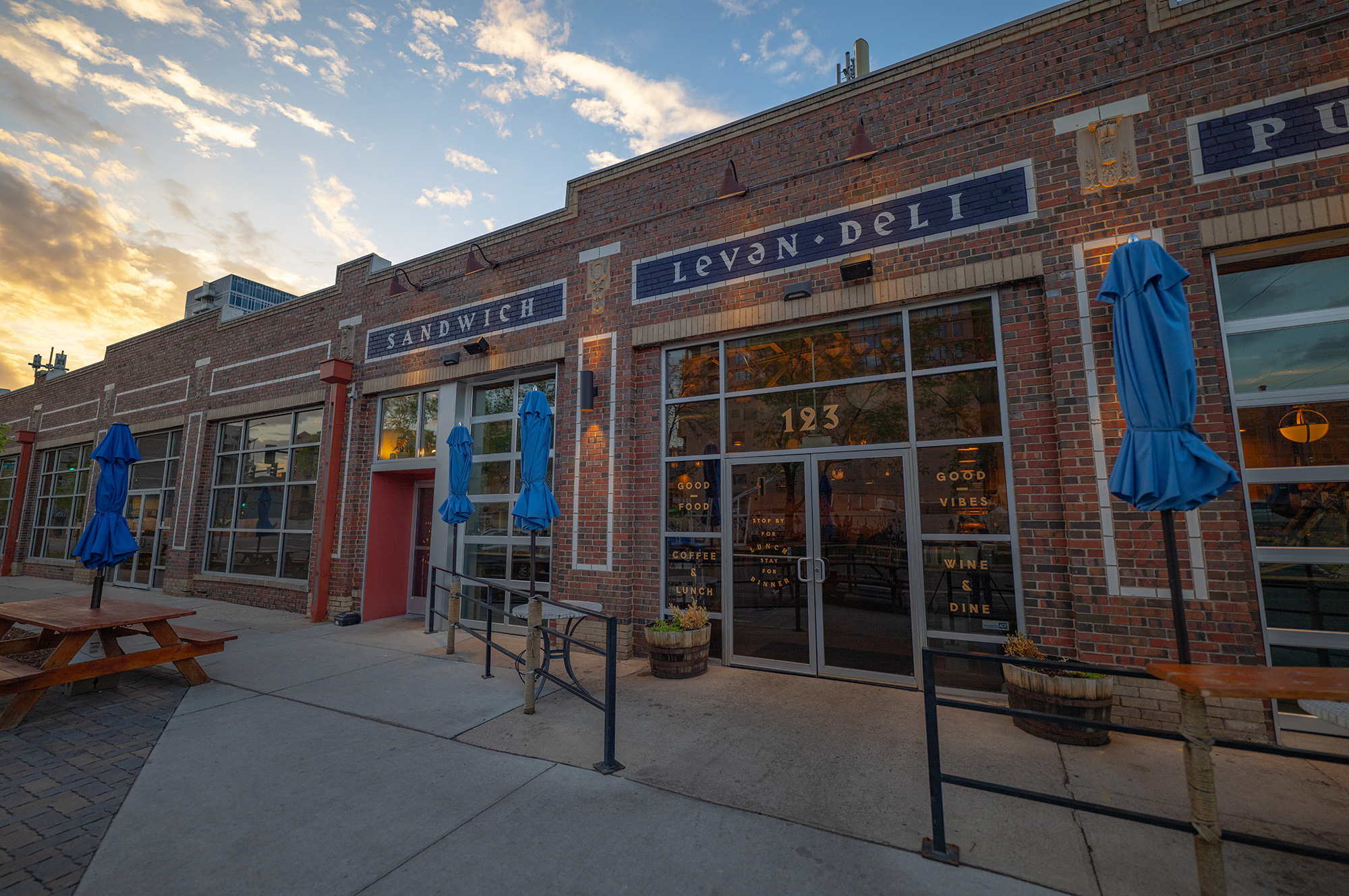
Testing the new lens at the F1.4 maximum aperture
Down on the docks at the lake near my home at sunrise gave me a good opportunity to get a bit closer to my subject with the 14mm F1.4 DG DN | Art lens wide open. Taking full advantage of the 14mm focal length allowed me to get down low on the dock, and focus on the “B” on the back of the boat to see how the lens performed wide open at a closer range. I was surprised that at approximately 3 feet (91cm) from the focus point, the lens did really well and the gradual transition from sharp to out-of-focus is very pleasing to the eye. The image is very sharp where I want the viewer to look first, and then the softness as the viewer follows the dock into the sunrise works well.
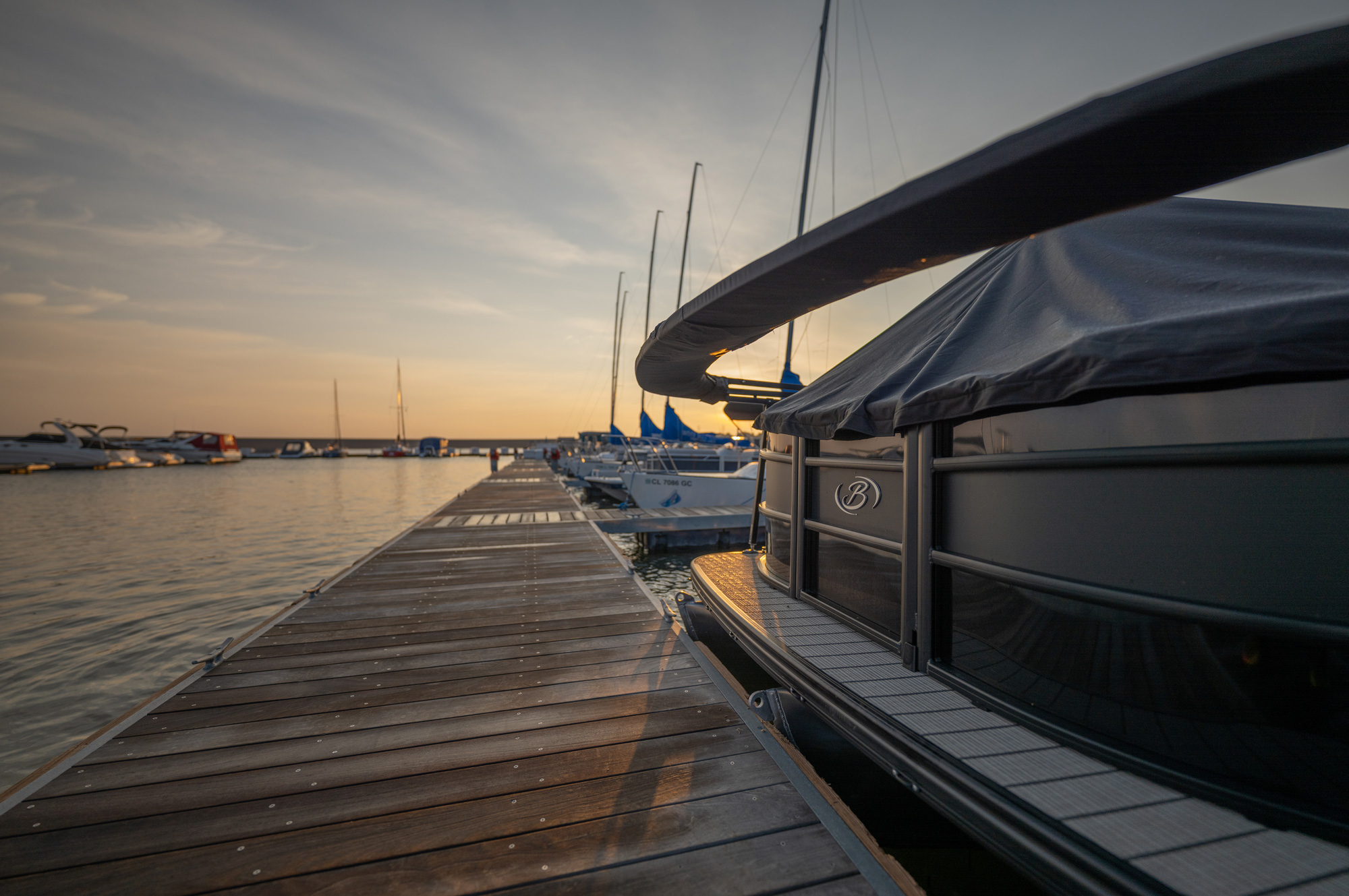
I had two more tests for the SIGMA 14mm F1.4 DG DN | Art lens at its widest aperture. First was this gorgeous church interior in Western Kansas. Having visited these churches several times before, I knew they were open most of the time and would make a great subject to test a lens of this focal length. Most of these small towns where the churches are located are home to only a few hundred people at most. I had the church to myself and was really able to take my time and focus on the performance of the lens.
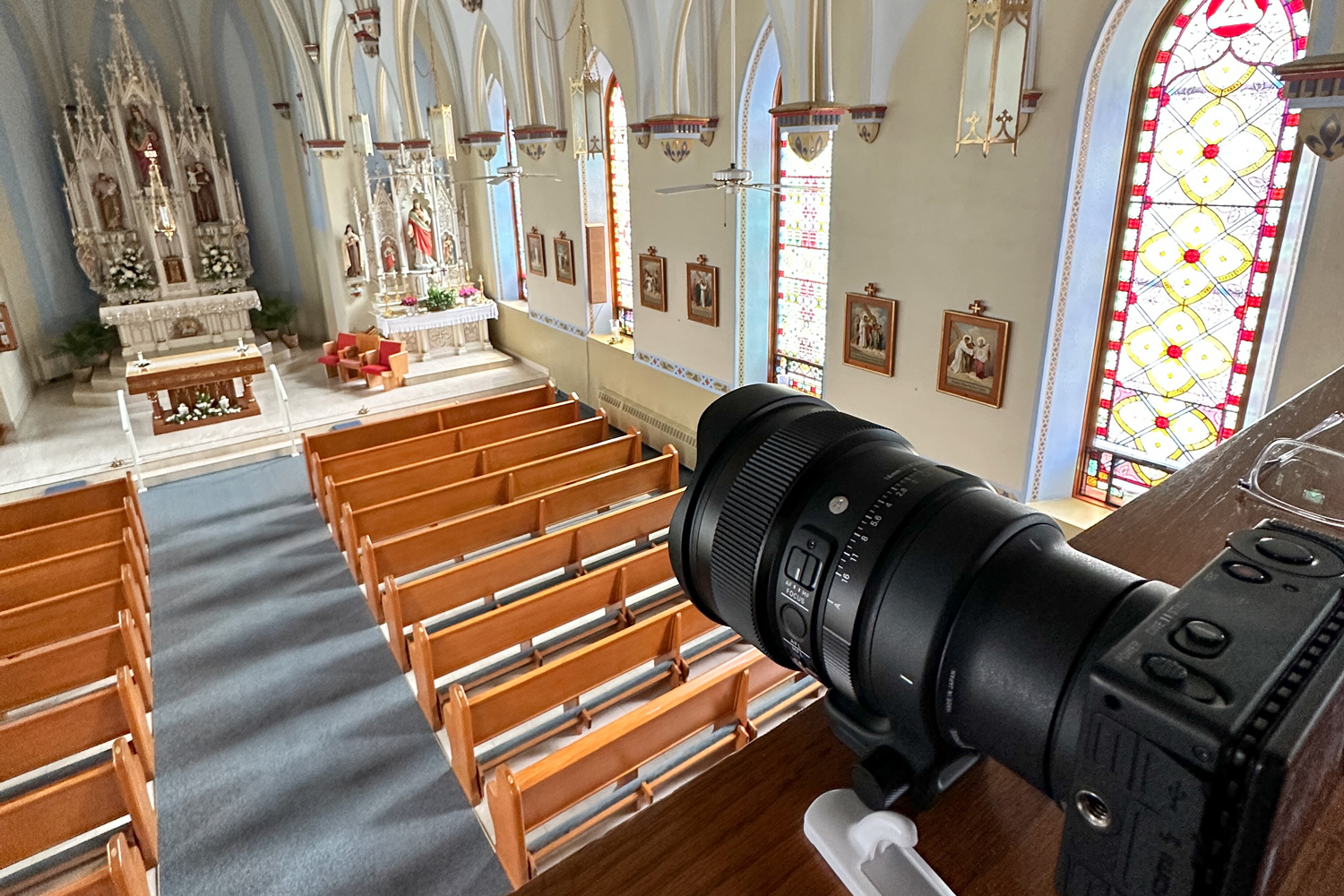
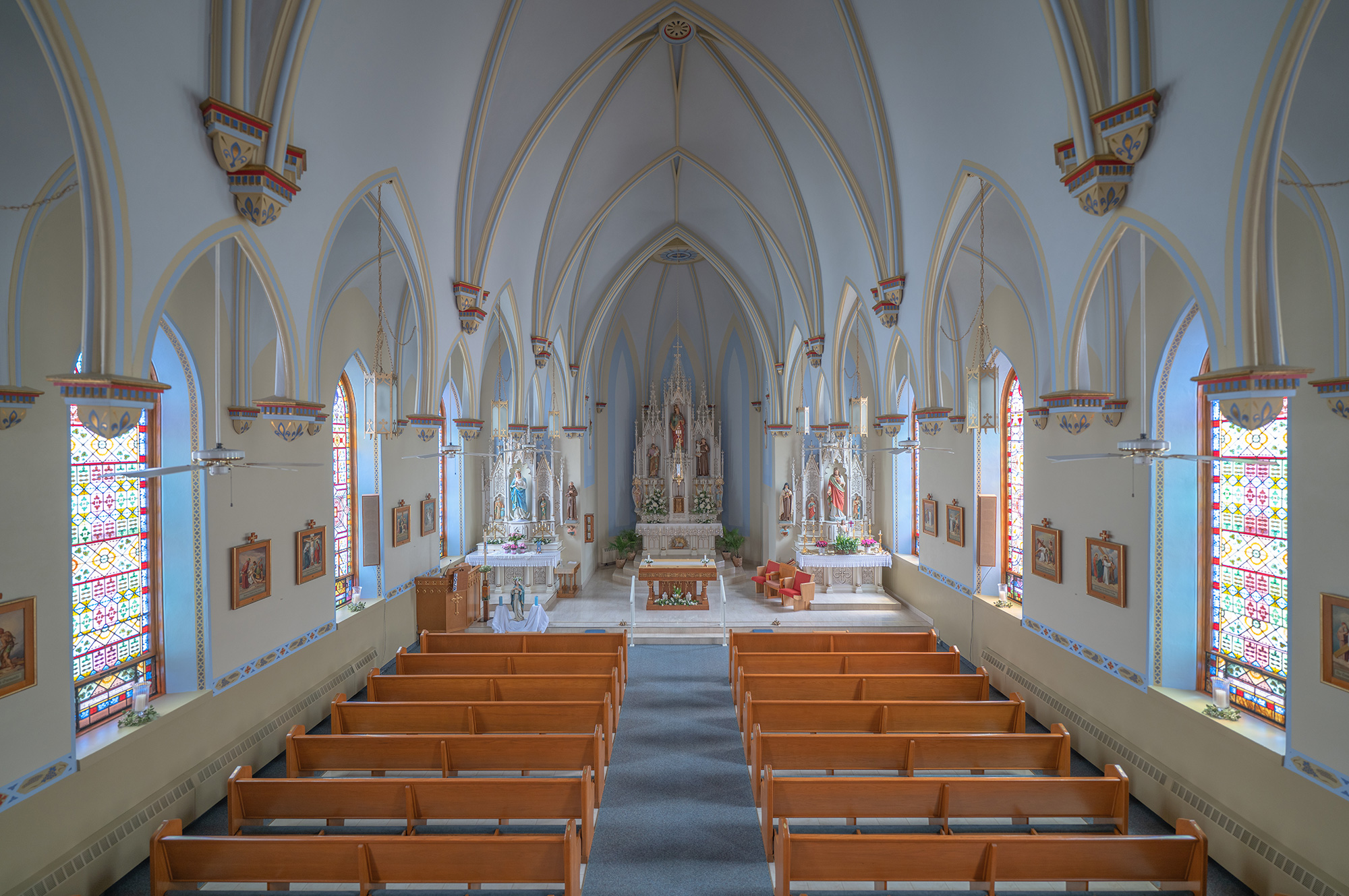
In this shot, I’m on the balcony looking down with my focus being dead center on the altar. Everything on the walls front to back is in focus.
After seeing this incredible performance I kept my fingers crossed for clear skies later that night to put the lens to the ultimate test. Sometimes in daylight situations, the brightness of a scene can minimize imperfections. Another things to note is that when testing a lens of this caliber, these images are not cropped. This is the only way to truly show edge-to-edge performance. This brings me to my final test at F1.4.
With Venus setting in the western sky, slight air glow to the north, this old wooden church made the perfect subject to test the SIGMA 14mm F1.4 DG DN | Art at night!
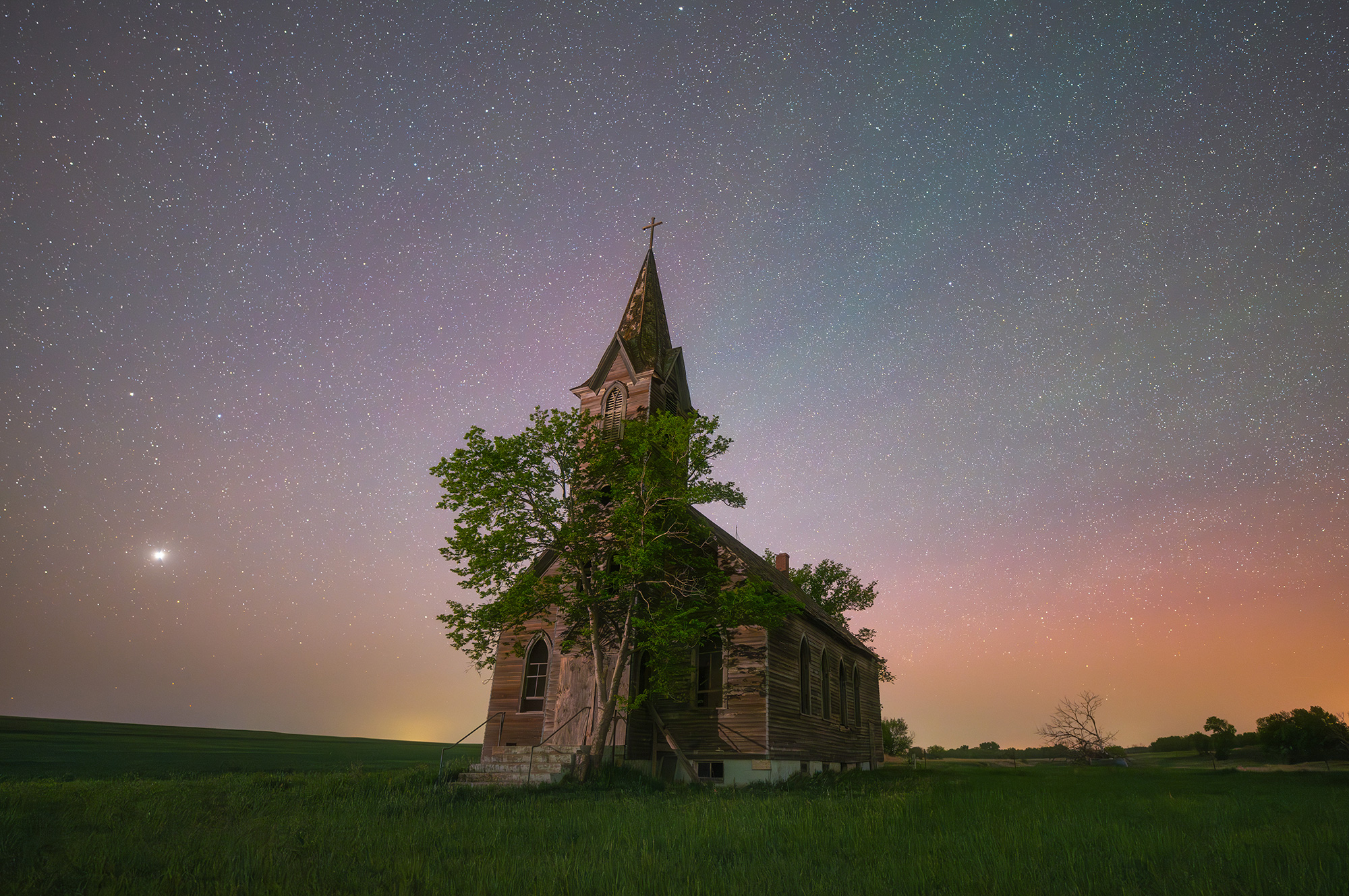
One of the biggest issues night photographers have is coma (stretching) of stars in the far corners of a star filled sky. Sometimes the coma can look like spaceships, or comets, depending on the quality of the lens. I made sure to focus on the top of the church because if there was any coma, by focusing closer, it would have magnified it in the stars. When I got home and reviewed these images on my computer, it was a breath of fresh air to see the stars in the corners are about as perfect as you can get. There is no coma even at F1.4. I had to look at the other images I took to see if this one was just a fluke. It wasn’t. All the images I shot that night looked great with the lens wide open.
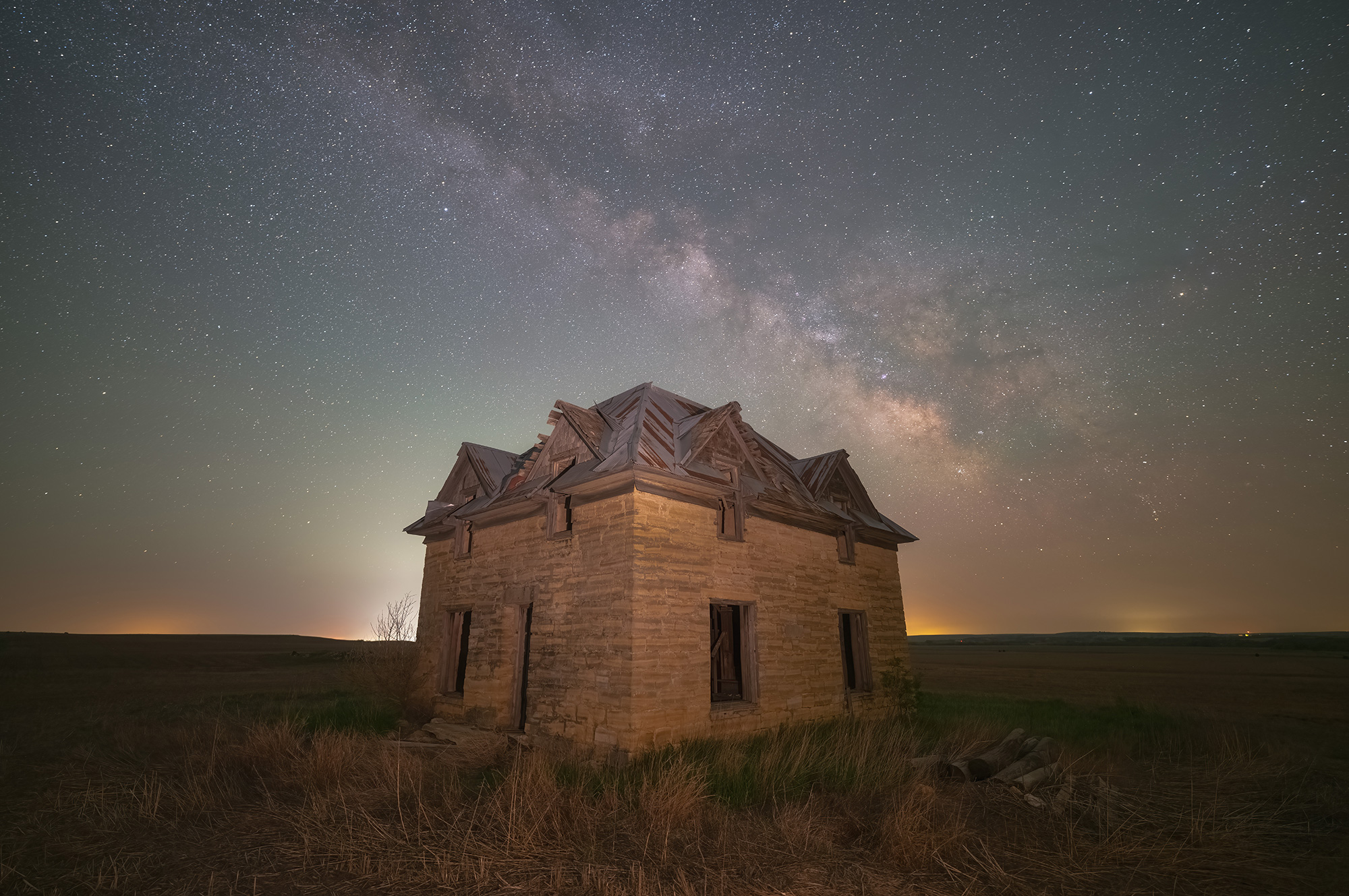
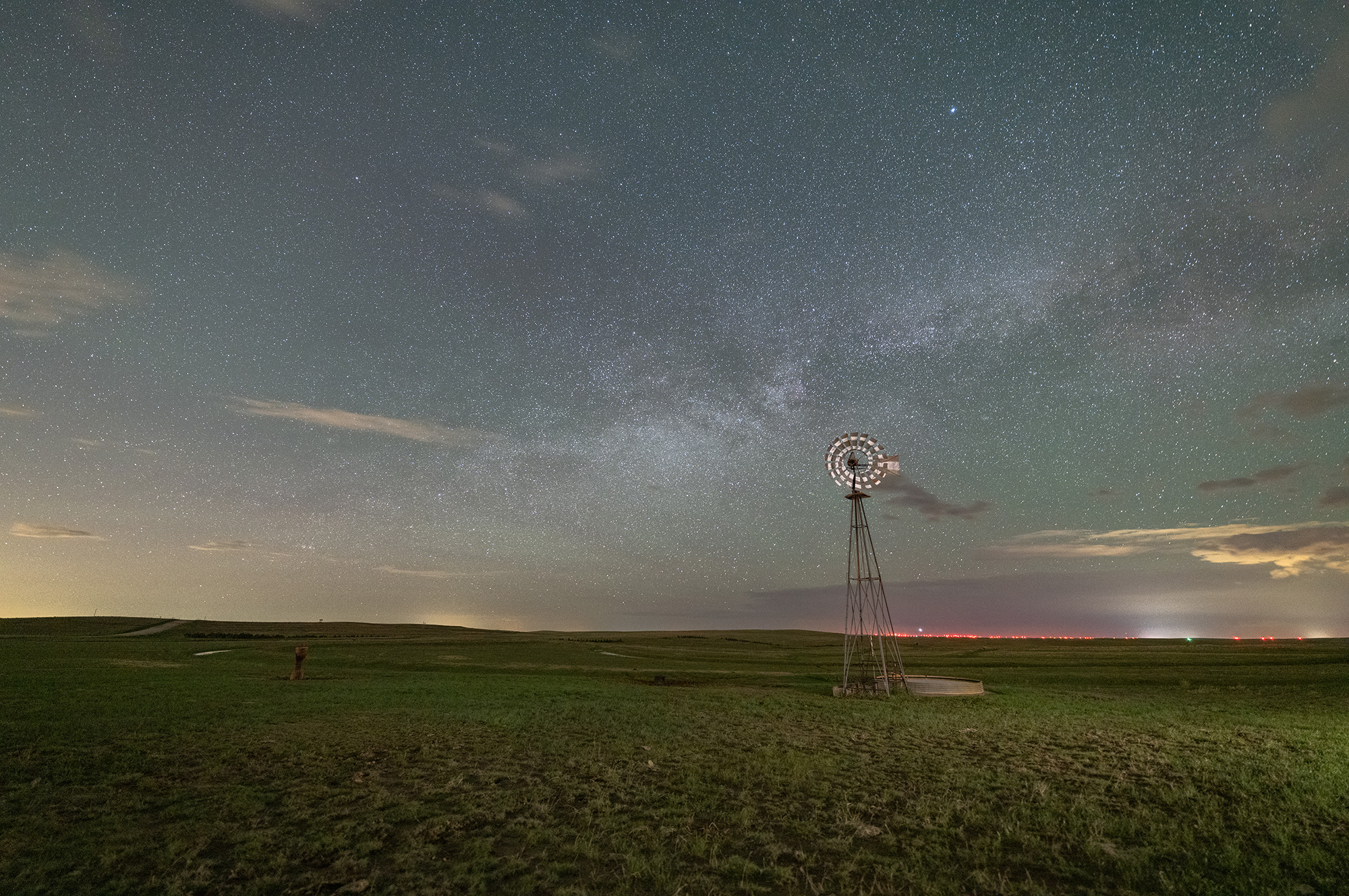
More helpful features of the 14mm F1.4 DG DN | Art lens
Another wonderful feature of the lens is the MFL (manual focus lock). Once I dialed in my focus, I could lock the focus with this switch on the side of the lens. It’s done internally so even if I accidently move the focus ring on the lens, the focus doesn’t change.
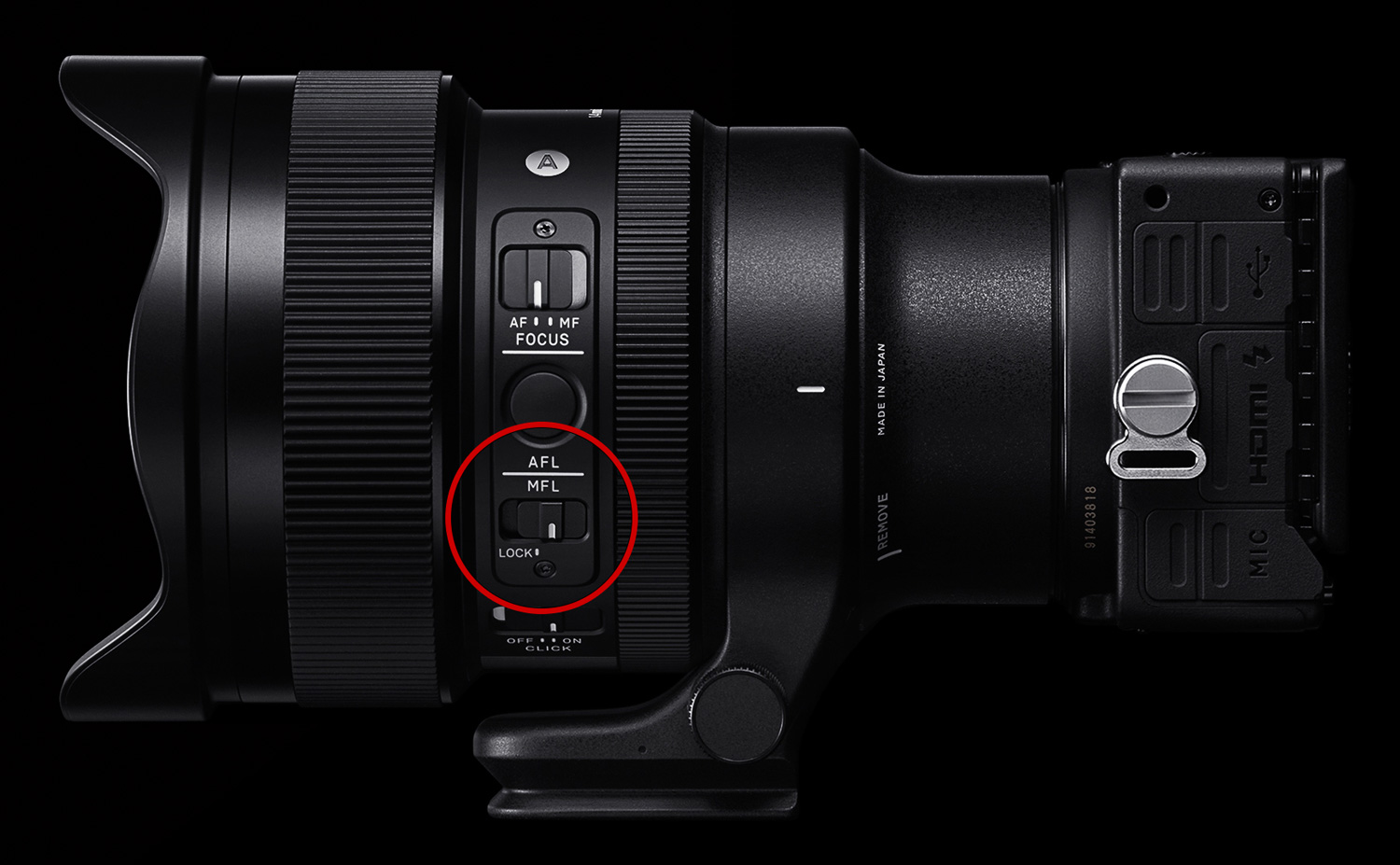
Getting in some wide-angle cityscapes was fun too. I don’t know just how close this lens can focus but it does focus pretty close. I’d say it’s less than a foot (Editor’s Note: minimum focus distance is 11.9 inches exactly!). This allows for some really wide and cool perspectives.
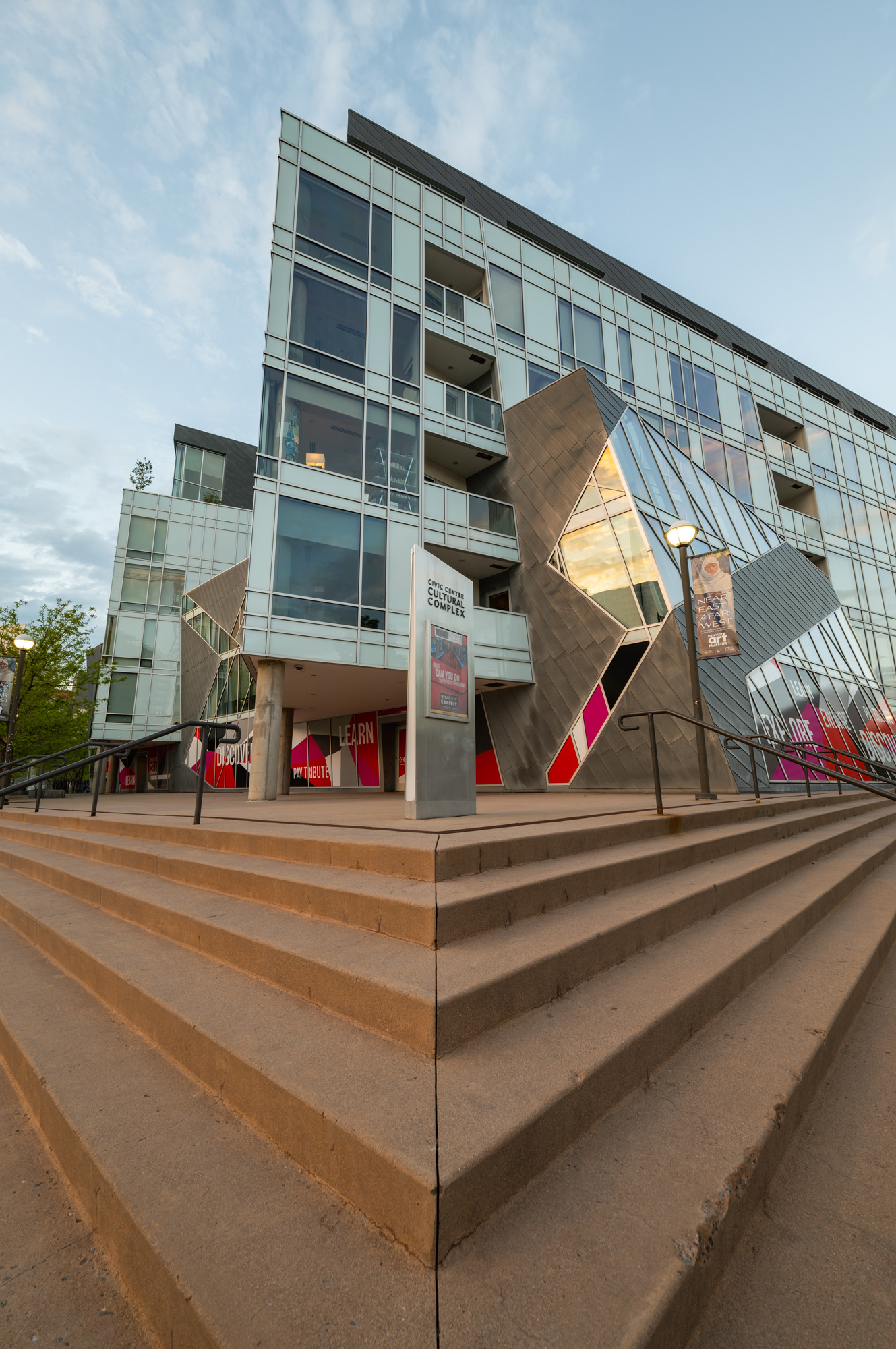
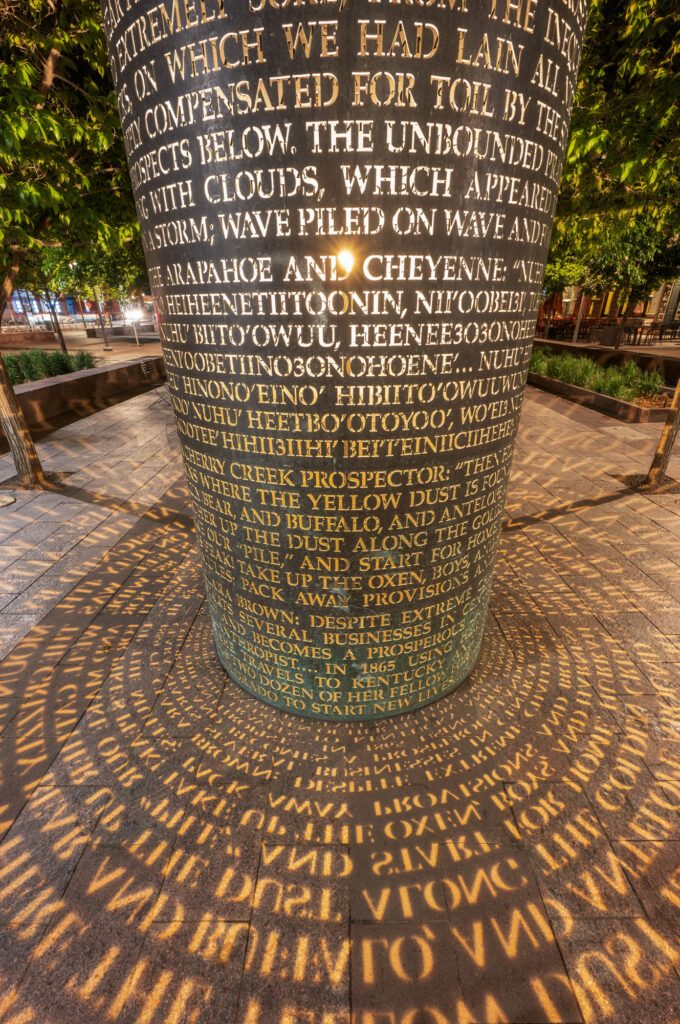
The examples above show you just how clean the image is in both the top and lower portions of the single frame exposure when the lens is stopped down a bit. This could potentially eliminate the need to focus stack, depending on the shooting conditions.
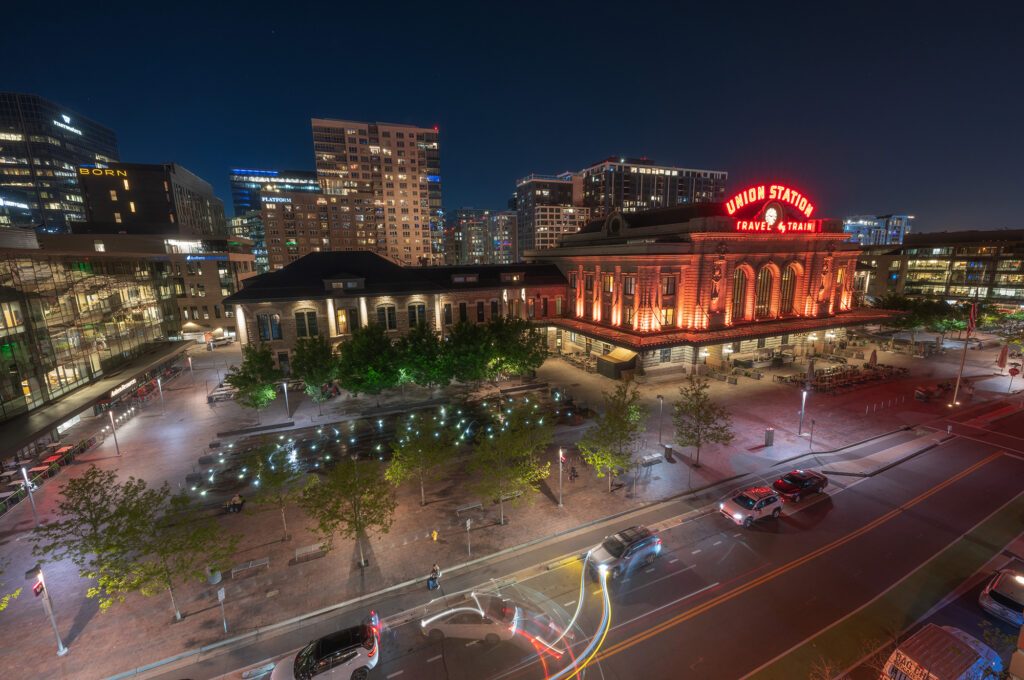
The lens also has an Autofocus Lock feature and is placed right where your thumb would sit when holding the lens. This is really nice when you don’t want to switch the camera to manual focus to lock your focus. By just pressing in on the button, your focus will lock, and when you release you can re-focus like normal.
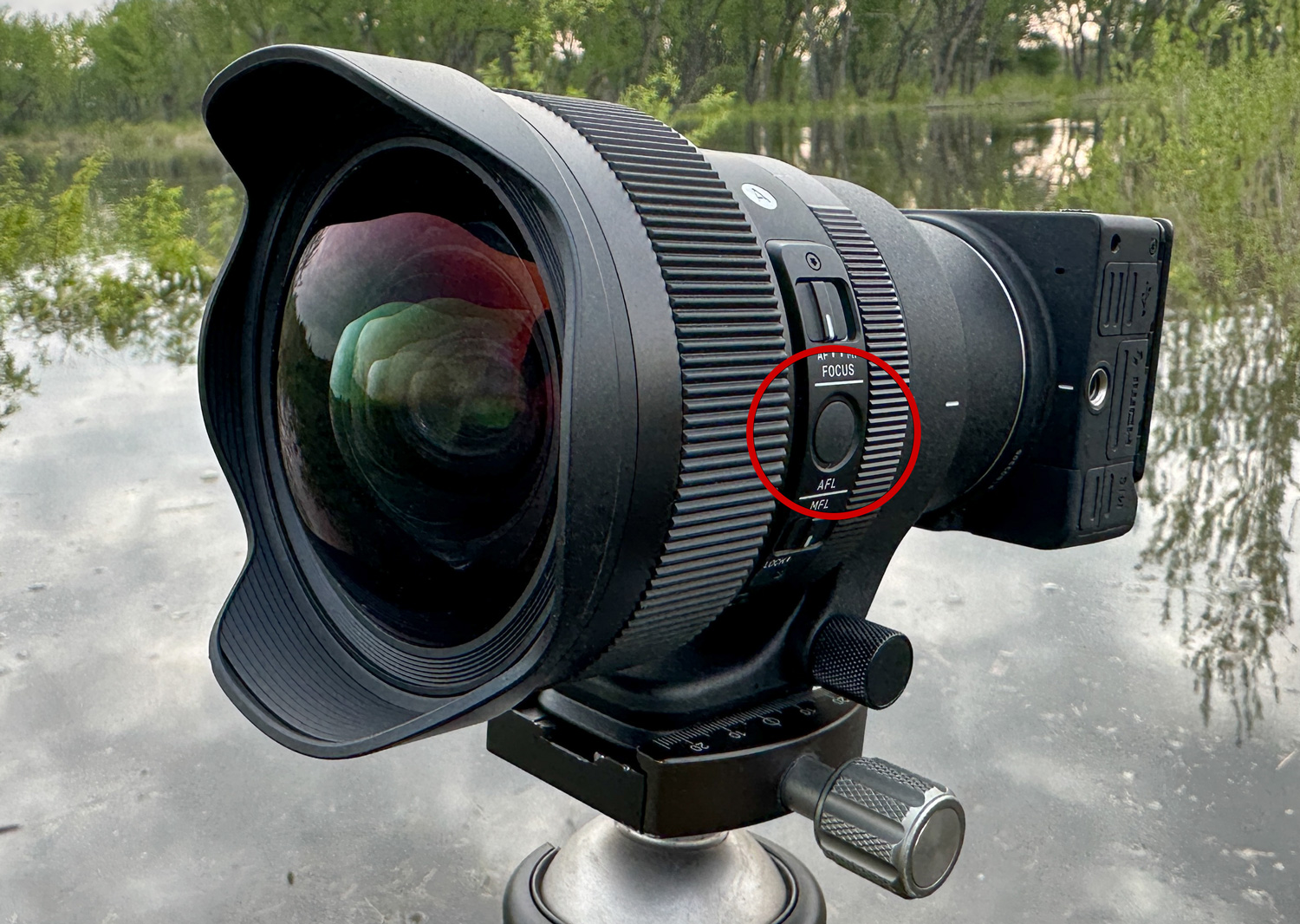
As it is with all SIGMA Art lenses, the 14mm F1.4 DG DN | Art is weather sealed against dust and moisture. When it started to rain while I was shooting this image I didn’t need to be too concerned. The rain was light and didn’t last too long. Having a well built, sealed lens gives me peace of mind when the elements are not perfect.
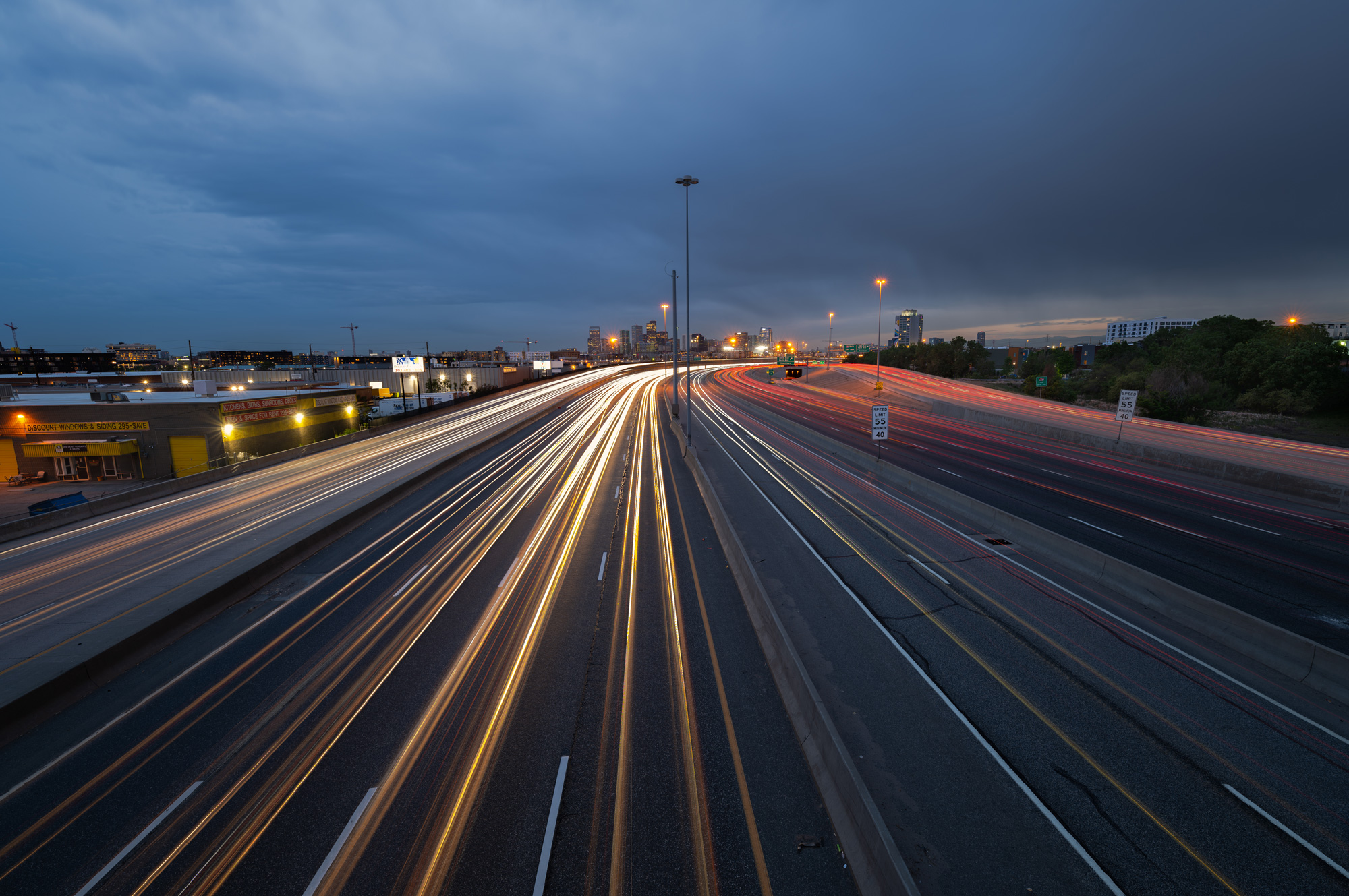
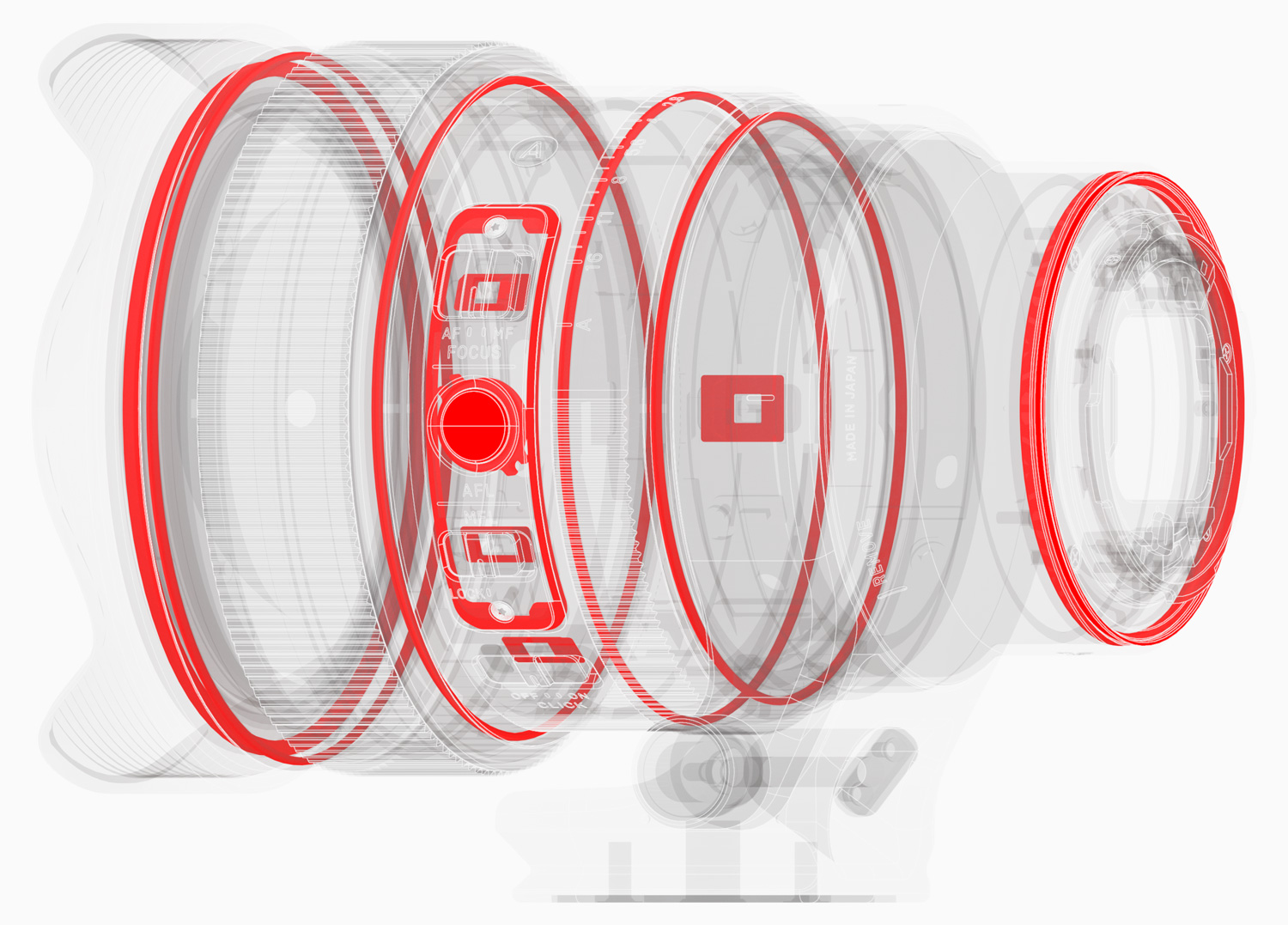
One thing some (most) landscape photographers enjoy is a lens with a nice sunstar. This lens has a minimum aperture of F16 which is small enough to create a nice sunstar. A sunstar is basically the light going through the aperture and being spread out across the blades inside the lens. The number of blades in your lens will determine the number and quality of points on your sunstar. Not all sunstars are created equal, and some are much better than others. The SIGMA 14mm F1.4 DG DN | Art lens, when stopped down to F16, does a fantastic job with this and adds a nice element to the photograph.
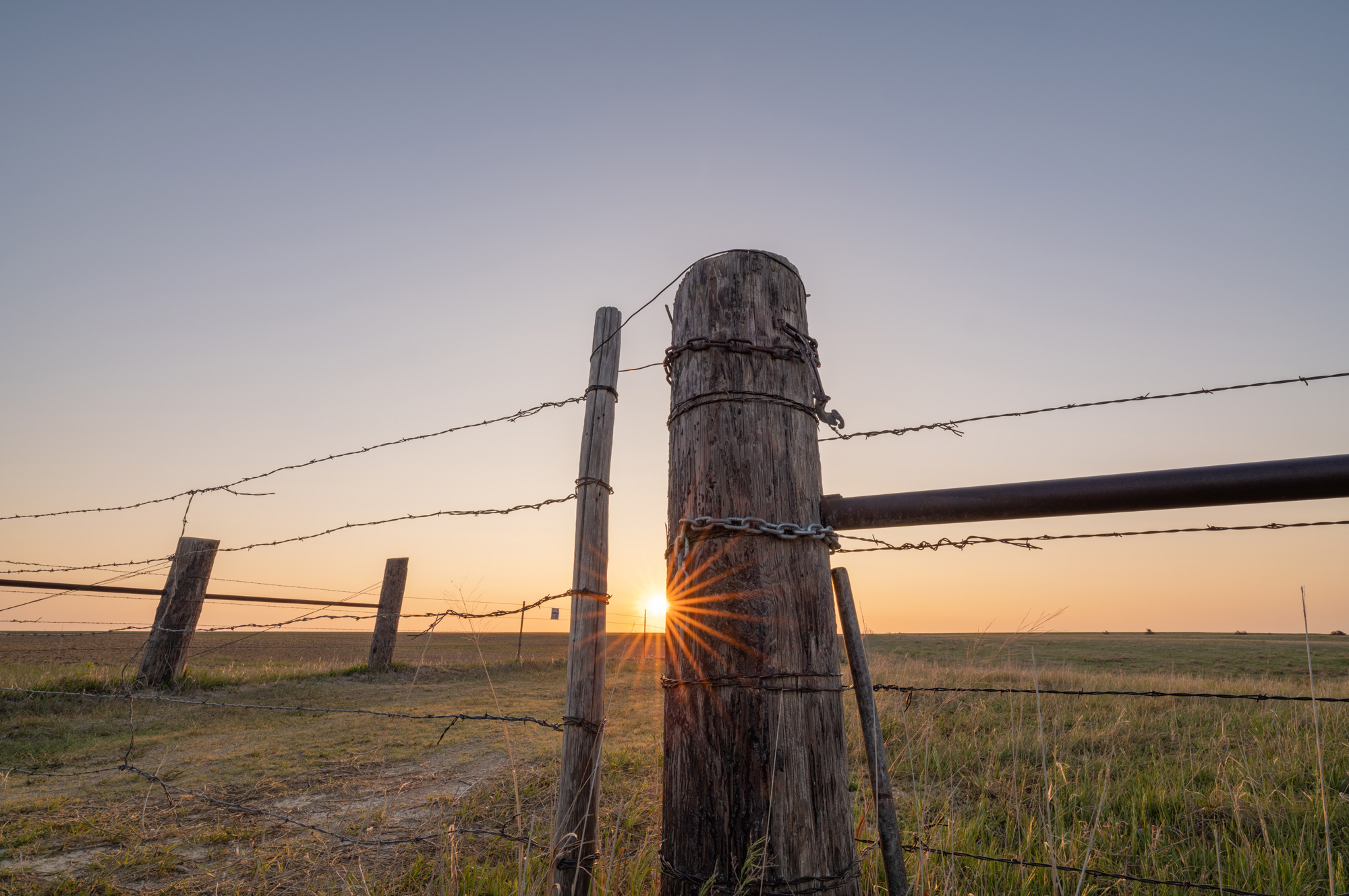
Final thoughts on the SIGMA 14mm F1.4 DG DN | Art
From the moment I opened the box, and during my time using the SIGMA 14mm F1.4 DG DN | Art lens in many different locations and elements, I’m not sure I can find any faults with this lens. Yes, it’s a tad on the heavy side, but when you consider the F1.4 aperture and the super wide-angle of view, it has to be. Yet, it’s well-balanced and feels good when you’re shooting with it. I’m looking forward to getting out a few more times with this lens. I can think of a lot of different things to shoot with this lens, from the city to dark, desert skies.
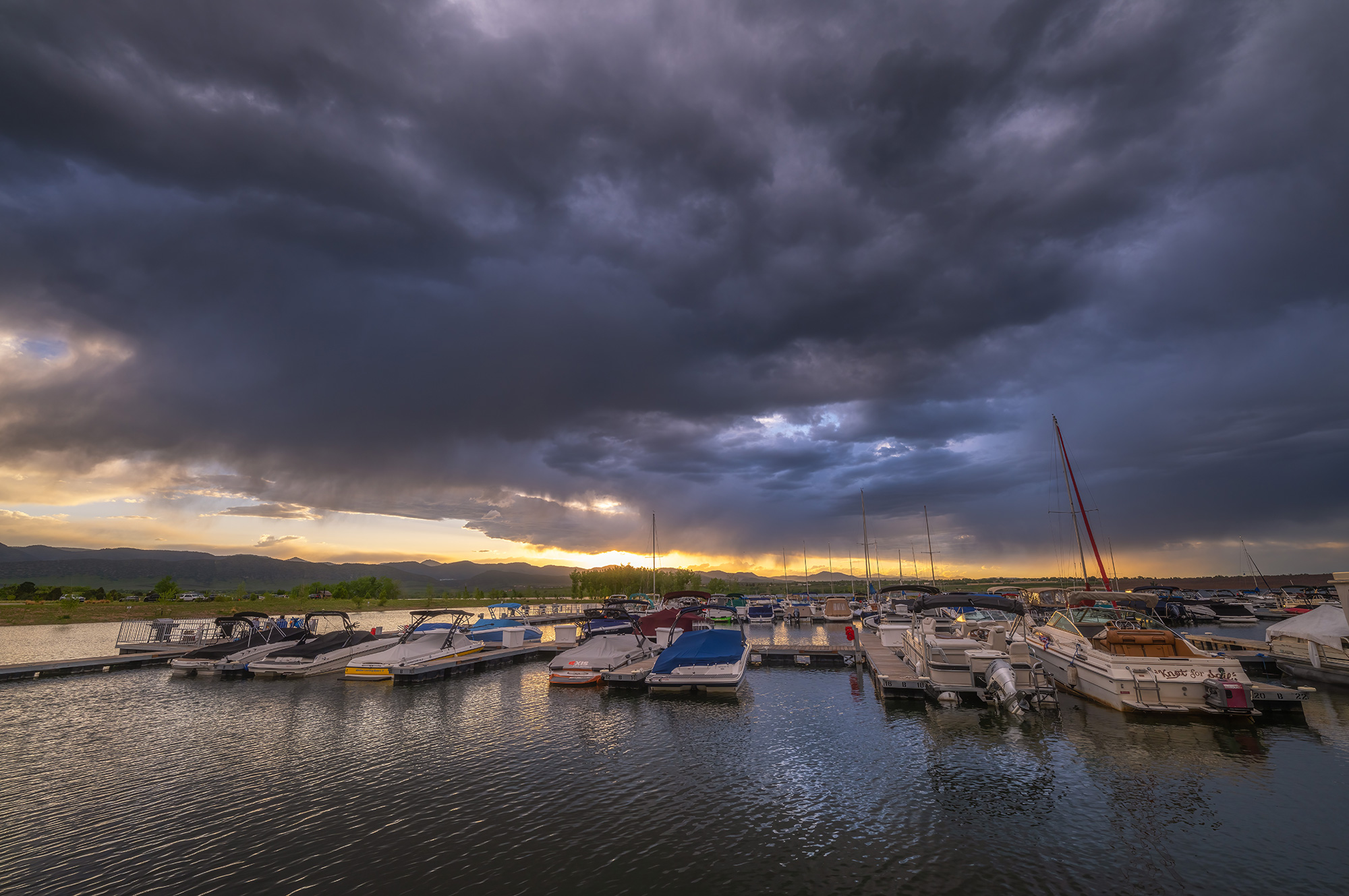
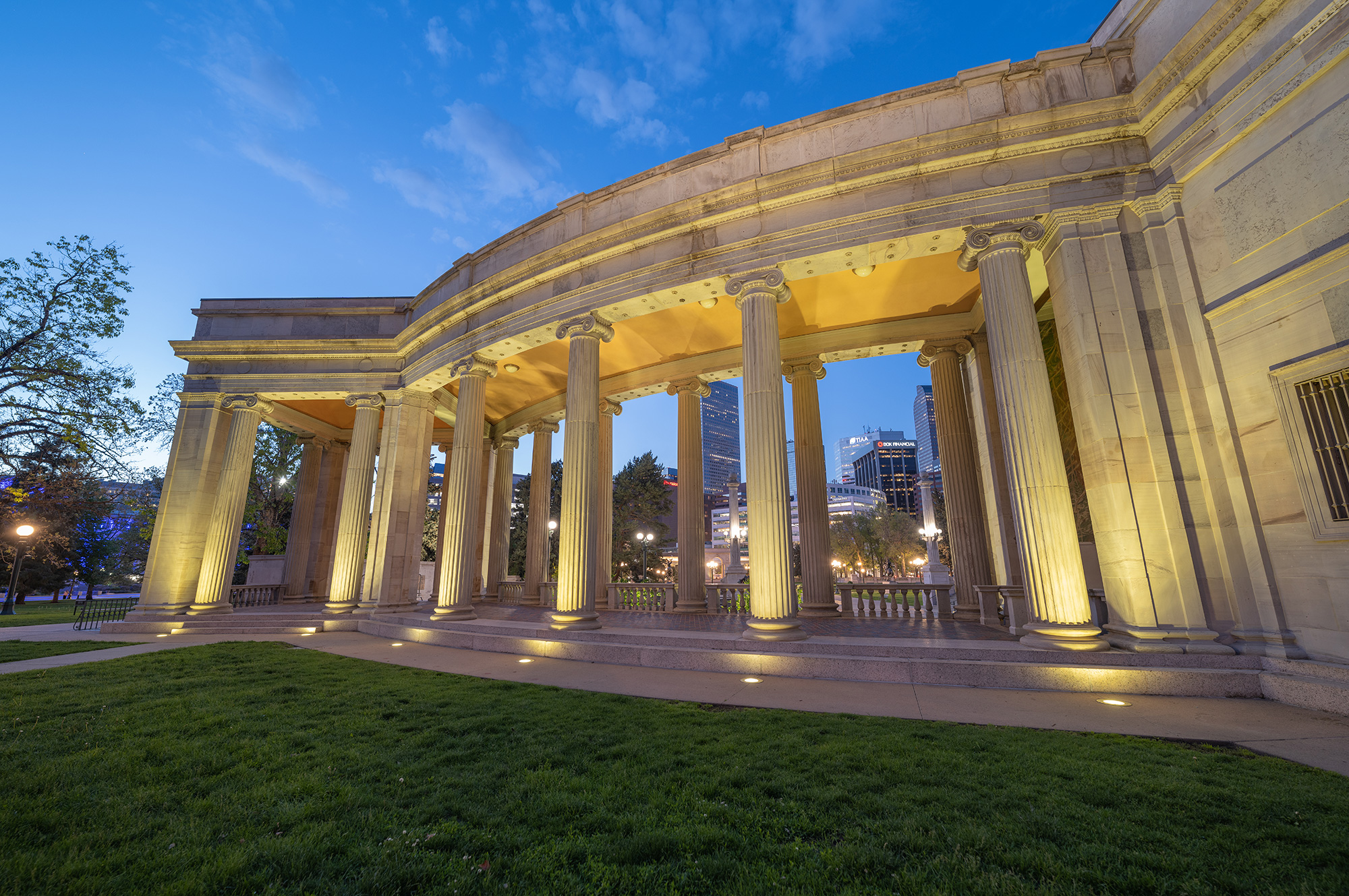
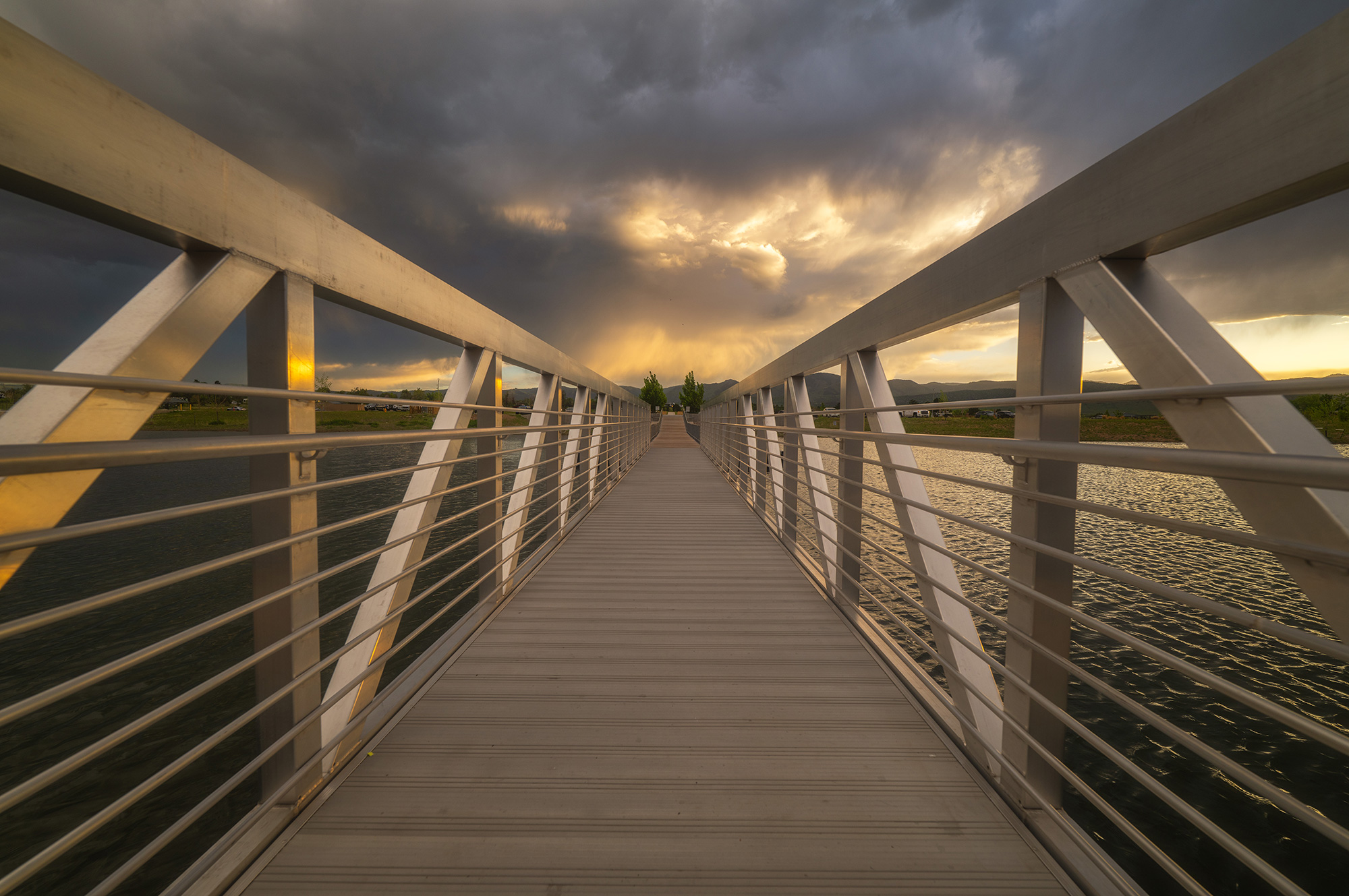
How would you use this lens to take your photography to the next level?

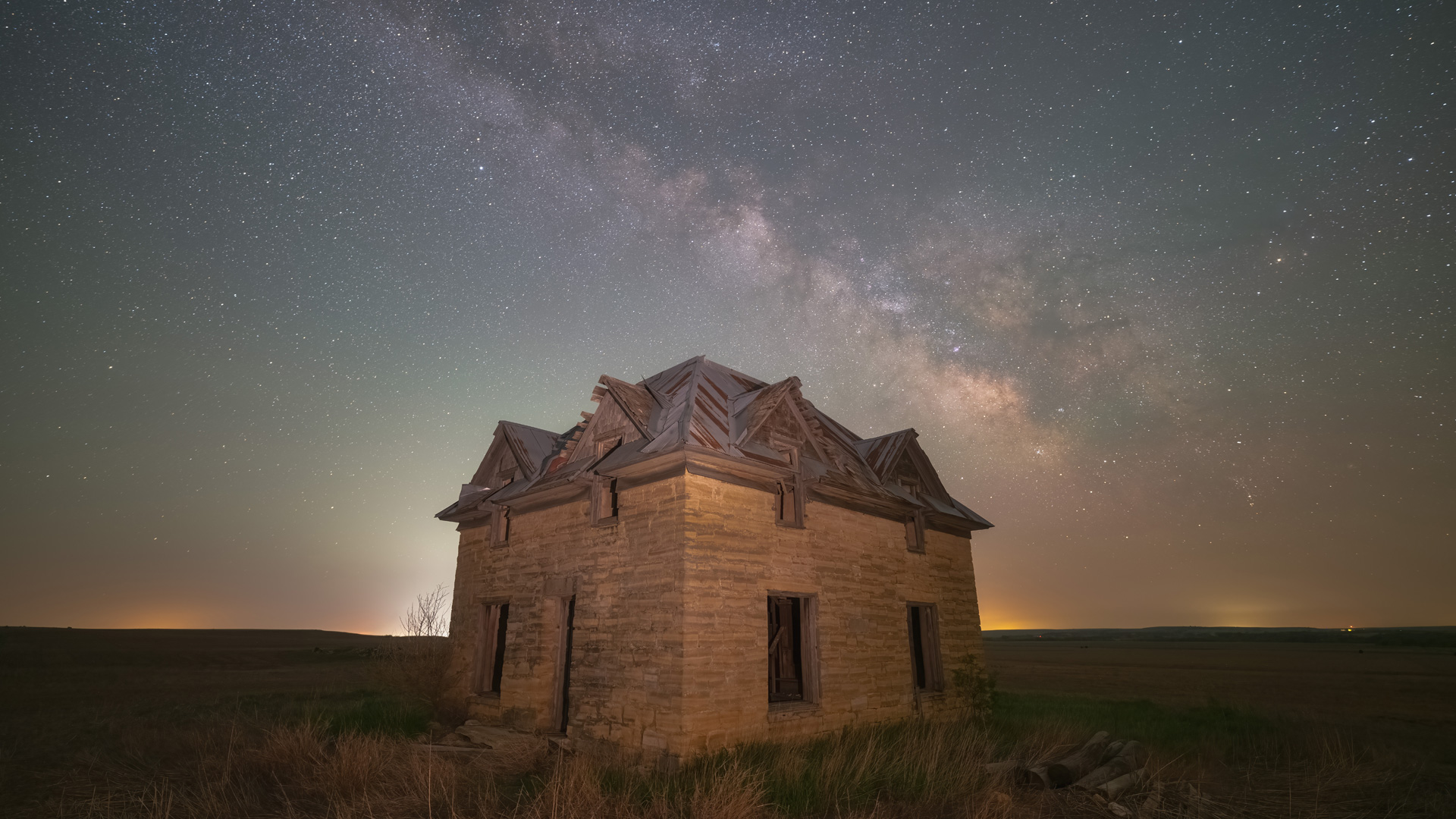
The lens looks awesome! I have the 14mm f1.8 and love it, I would definitely get this lens, if it’s made for Nikon. I am excited about the lens, but there was no information about other lens mounts. It’s great it comes out in E and L mounts, but lot’s of us use Nikon and Canon camera’s and would love to also have this lens. Hopefully that’s in the works?
“https://blog.sigmaphoto.com/2023/first-look-sigma-14mm-f1-4-dg-dn-art-lens/” – I was unaware of this. I have five Art lenses for my Sigma SD Quattro H camera, and I was under the impression none of my Art lenses is weather sealed.